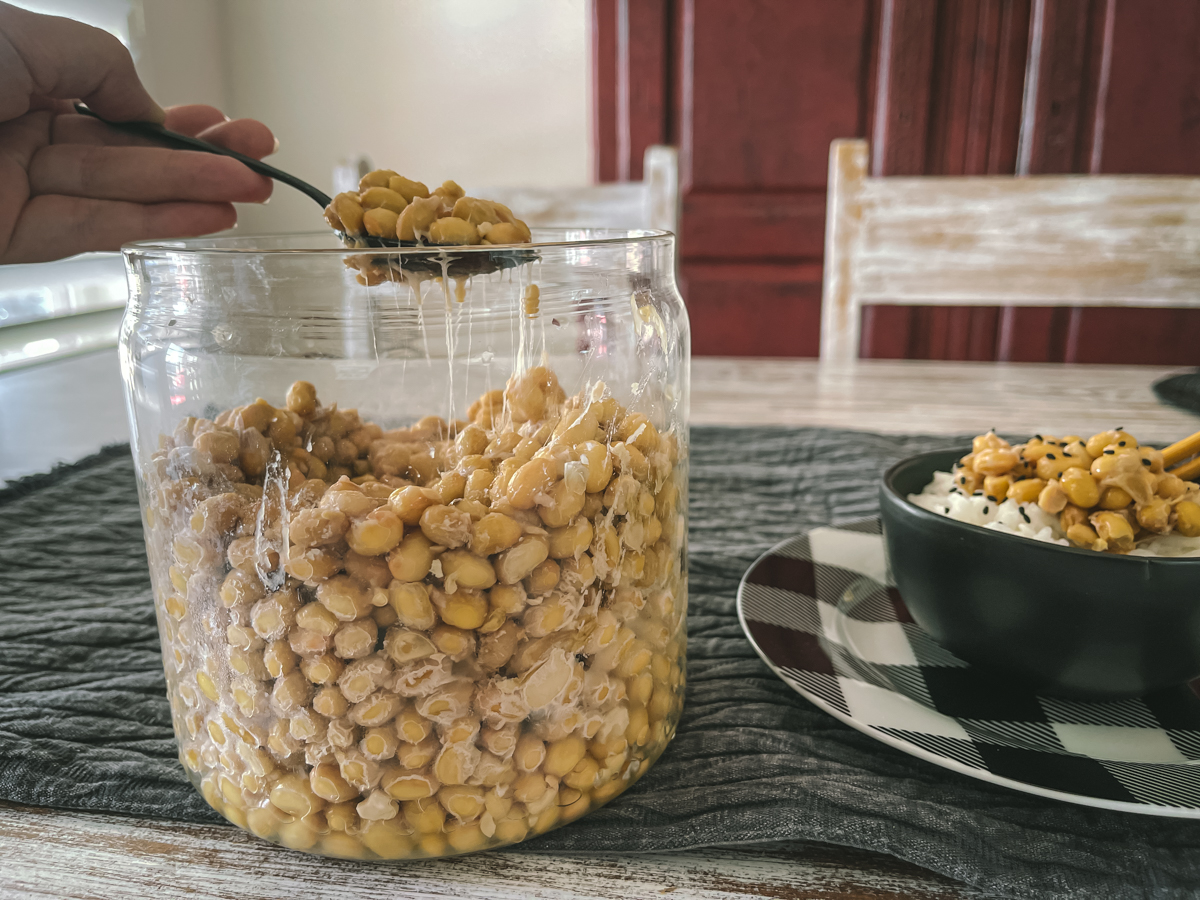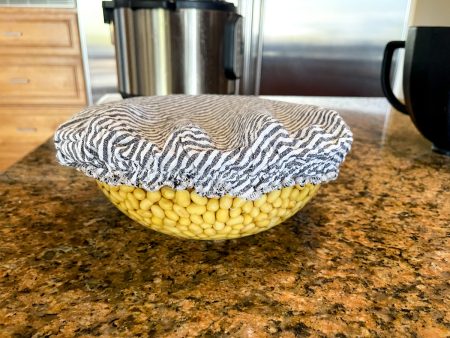Fermented Natto
I have always wanted to make my own natto. It was hard to get a culture, and ready-made natto was filled with MSGs and bioengineered ingredients. Keeping my blood pressure down is really important since it runs in my family, and fermented foods like kefir have improved this for me and quite effectively. Natto is fantastic for helping with blood pressure, keeping your heart healthy, and many other things. Natto has a unique flavor that many don't like. I think it's quite bland but some equate it to a strong cheese like brie, and it can be stringy too, but no worries about this. You can add natto to any warm dish, and the stringiness goes away as well as the strong taste. I actually really love it now with a bowl of rice and a fried egg. Natto is not affected by heat so it's very versatile. It is traditionally served with rice and condiments like mustard and soy sauce. I add it to stir-fries and even chili. It takes on the flavor of the food and it is so good for you with HUGE health benefits. I'm so excited to now be making my own natto and have a culture. It stores best in the freezer so you can have lots of natto whenever you'd like. I like to freeze it in small portions and grab it from the freezer when I need to add it to a dish or condiment. This can also be made with black soybeans. Other beans don't seem to work as well and most think the health benefits are diminished unless you use soybeans. Check out this article: How Natto Can Help Your Heart and Improve Blood Pressure
Watch The Video
Equipment
- 1 Instapot or a large pan for boiling on the stove
Ingredients
- 16 ounces Organic soybeans – 2 ¼ – 2 ½ cups
- 1.5 grams Natto Starter – about 1 teaspoon or slightly more
Every ingredient with a link was selected by me to make it easier for you. I may receive a small affiliate commission if you buy something through my links. Thank you! ❤️
Instructions
Soaking and Preparing
Cooking the soybeans
- Pressure cooker: Place the soybeans in a pressure cooker, cover with water, and cook on high pressure for 30 minutes, or until beans are soft and can squish between your fingers.Stovetop: You can also cook them on the stove in a pot – cover with water and cook until the beans are soft and easy to squish between your fingers. Cook for around 2 ½ to 3 hours.
- Sterilize your yogurt making jar and utensils for fermenting by pouring boiling water over them to make sure no other bacteria will be competing with the natto culture.
Making Natto Solution
- Natto bacteria require oxygen to survive and reproduce, so do not put the inner lid on the jar. Place the open jar into the water bath then put the clear cover lid on the maker. The cover lid has ventilation holes allowing oxygen in. Set the temperature to 110°F and the timer to 24 hours and then press confirm.
- Condensation will have collected under the cover lid. Please take care removing it and be careful not to get water in the natto. At first, the natto might have a strong ammonia smell, (mine did not) but this will subside with a second fermentation by placing it in the fridge. Stir the beans and check the stringiness which is a sign of good fermentation.
- Place the lid on the jar and transfer the fermented beans to the fridge. This is the second fermentation and will increase the signature stringy texture and reduce the ammonia smell. By resting the beans in the fridge for a day, the amino acid composition of soy protein will enrich the flavor of natto.
Storage
- Homemade natto will last 5-7 days in the fridge. If you are not planning to eat immediately, keep it in a freezer. When it is stored in the fridge, a white rough substance will start to grow which will give it a strong smell and texture. Portions of natto can be stored in the freezer for up to 2 years and you can thaw them and make more natto, or freeze them in small portions to eat more frequently. Just thaw in the fridge when you are ready to eat it.
Reculturing
- A third of a cup of this natto can be used as a substitute for natto starter on your next batch. Simply follow the same steps, but when it comes to adding the leftover natto, just stir it into your cooked soybeans in place of the natto solution. You can do this up to three times before the natto loses its fermentation ability. If it is not getting stringy, you need to use a new natto starter.












